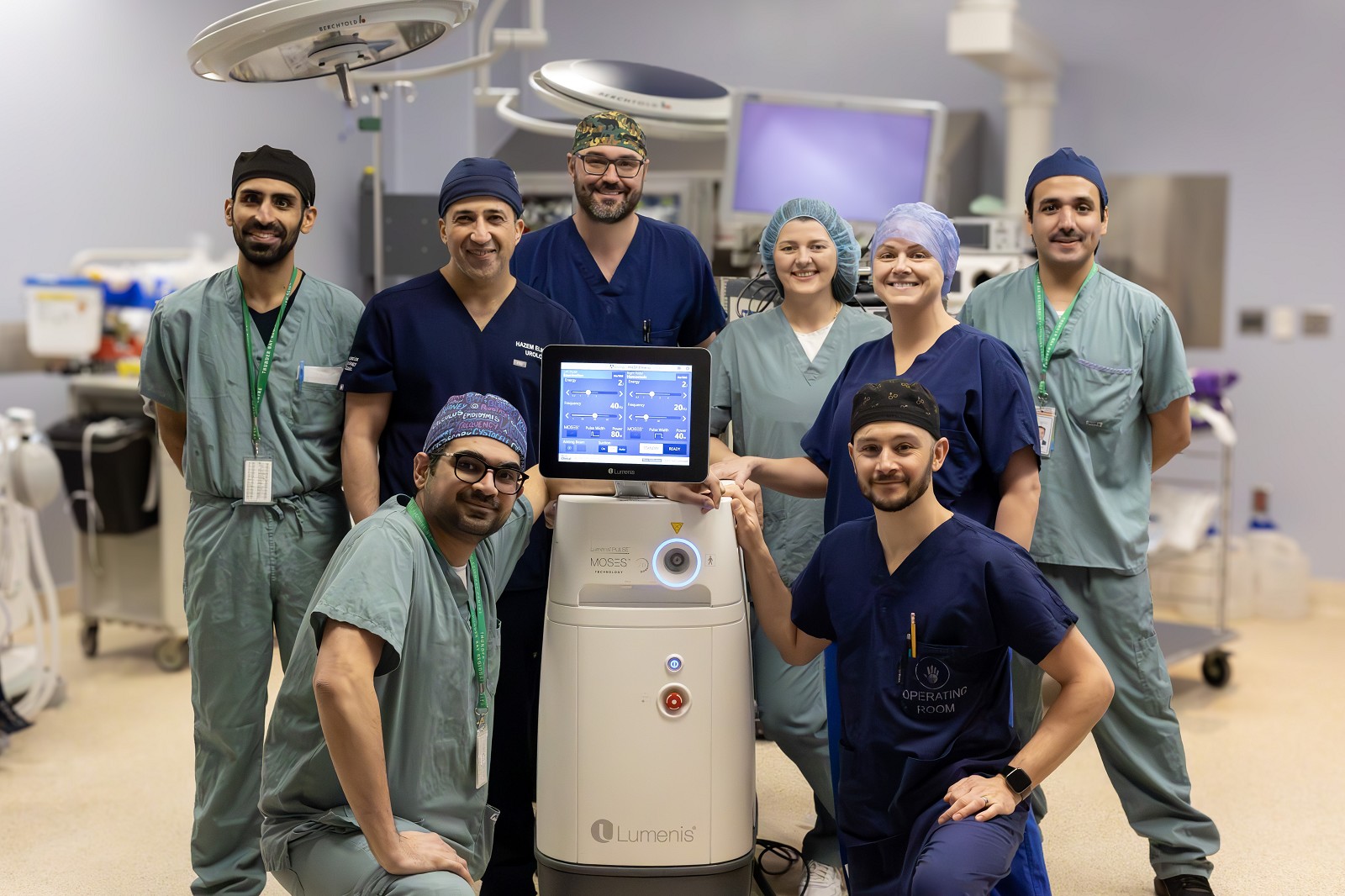We Need Your Help to Bring New Urology Tools to Thunder Bay
Published Wednesday, June 12, 2024

Dr. Elmansy pictured second from left and team with MOSES 2.0
The Endourology Program at the Thunder Bay Regional Health Sciences Centre is regarded as one of the best in the world. Patients travel here to get treatments not available elsewhere in Canada, and other urologists and fellows from around the world come here to train.
But Dr. Hazem Elamansy, one of our Hospital's urologists, said the program isn't resting on its laurels, as a recent equipment upgrade proves.
“Thunder Bay is the first site in Canada to have the Moses 2.0 laser therapy to treat enlarged prostates (BPH), kidney stones, and other urological issues,” Dr. Elmansy said. “This unit offers several upgrades over the Moses 1.0.”
Speed is one of the most important advancements. “This unit is faster than the previous unit,” Dr. Elmansy said. “That means patients are under anaesthesia for a shorter amount of time, which is safer for them. It also means I can treat more patients in a day, reducing wait times.”
Dr. Elmansy said that the Urology Program is also part of clinical trials investigating moving some BPH treatments out of the operating room and into the clinic. This would bring many advantages: less anaesthesia, less wait times since it's not booked through the busy OR, and possibly faster recovery times.
“We are here to meet patient expectations. Every surgery is different, and every patient has different concerns,” Dr. Elmansy said. The earlier BPH treatment begins, the more options there are. “It's so important to have more treatment options for our patients. We encourage patients to talk to their doctor at the first sign of urinary problems so they can take advantage of those options.”
The team is also looking closely at two possible additions to the program in the near future: a surgery simulator and robot-assisted surgery.
The surgery simulator, as the name suggests, is very much like a flight simulator. Surgeons can go through the surgery step by step. Since every surgery is different, the surgery simulator would help improve treatment planning and can identify potential problems ahead of time. The simulator can also help train urologists on new equipment including learners in the new residency program, launching this summer through NOSM University. Lastly, the surgery simulator would also be a useful tool for research.
“Perhaps best of all, you can add different surgery modules,” Dr. Elmansy said. “That will allow other programs at our Hospital to use this cutting-edge equipment.”
Robot-assisted surgery is another exciting possibility on the horizon. This minimally invasive surgery method requires smaller incisions, which helps patient care in several ways. Recovery times are faster, there are lower risks of side effects, and there are lower risks of infection.
While the Moses 2.0 laser is already in operation, items such as the robot-assisted surgery and the surgery simulator are still in the planning stages. Dr. Elmansy said that the Urology Program is raising funds now through the Thunder Bay Regional Health Sciences Foundation. When the plan is ready, funding will be ready, too.
“The future of BPH treatments are being made here,” Dr. Elmansy said. “Through our research projects, our patients have access to treatments not available to the general public. Planning for these cutting-edge tools now will help us ensure we have the most and most advanced BPH and urological treatments available for patients throughout Northwestern Ontario.”
You can help! Your donation to the Urology Program today will help bring tomorrow's new treatments and tools. Please make your donation online at healthsciencesfoundation.ca/donate or call the Health Sciences Foundation Donation Centre at 807-345-4673.
Article by Graham Strong